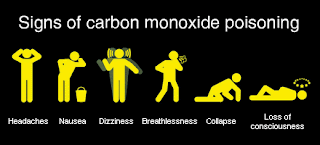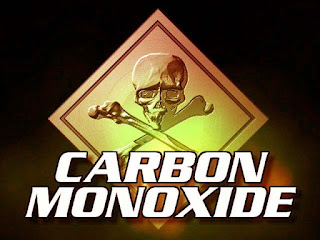Gas Poisoning in the Car ?
Sometimes, we hear the person died in a car when the vehicle closed. Air filtration systems are not smooth, the engine is on or the road so that exhaust fumes that leaked slowly inhaled by people who were in the car. One of the chemical compounds present in the smoke of incomplete combustion is Carbon Monoxide (CO). This gas is colorless and odorless resulting from incomplete combustion processes derived from carbon-based materials such as wood, coal, fuel oil and other organic substances.
Misdiagnosis is not uncommon for the symptoms are not typical, and many clinical manifestations (impacts occur) arise, necessitating a high accuracy to handle the case of a patient with CO gas poisoning. Cigarette smoke also contains CO gas. In adults who do not smoke usually formed hemoglobin carboxy (hemoglobin binding with carbon monoxide) is not more than 1% but in a heavy smokers are usually higher at 510%. In pregnant women who smoke, likely to endanger.
The source of carbon monoxide is the most common engine combustion residues. Disposal of car fumes containing 9% carbon monoxide. In areas that jammed the danger level is high enough to poisoning. Carbon monoxide does not irritate but very dangerous (poisonous) the CO gas called as silent killer.
It result is fatal. First, the oxygen will be unable to compete with the current CO binds to hemoglobin molecules. This means that the blood oxygen levels will be reduced. In fact, as is well known oxygen is needed by the cells and tissues of the body to perform metabolic functions. Second, the CO gas will inhibit the oxidation of cytochrome complex.
Lastly, CO can bind directly to the heart muscle and bone cells. The most serious effect is poisoning occurs directly against these cells, also cause disturbances in the nervous system. Symptoms of carbon monoxide poisoning preceded by headache, nausea, vomiting, fatigue, profuse, sweating, pyrexia, respiration increases, confusion, visual disturbances, hypotension, tachycardia, loss of consciousness and chest pain suddenly can also occur in people who suffer from pain chest. Death likely due to difficulty breathing and pulmonary edema.
First Aid Poisoning CO Gas
Increase muscle movement leading to increased oxygen requirement, so the supply of oxygen to the brain can be reduced. Immediately brought to the nearest hospital.


